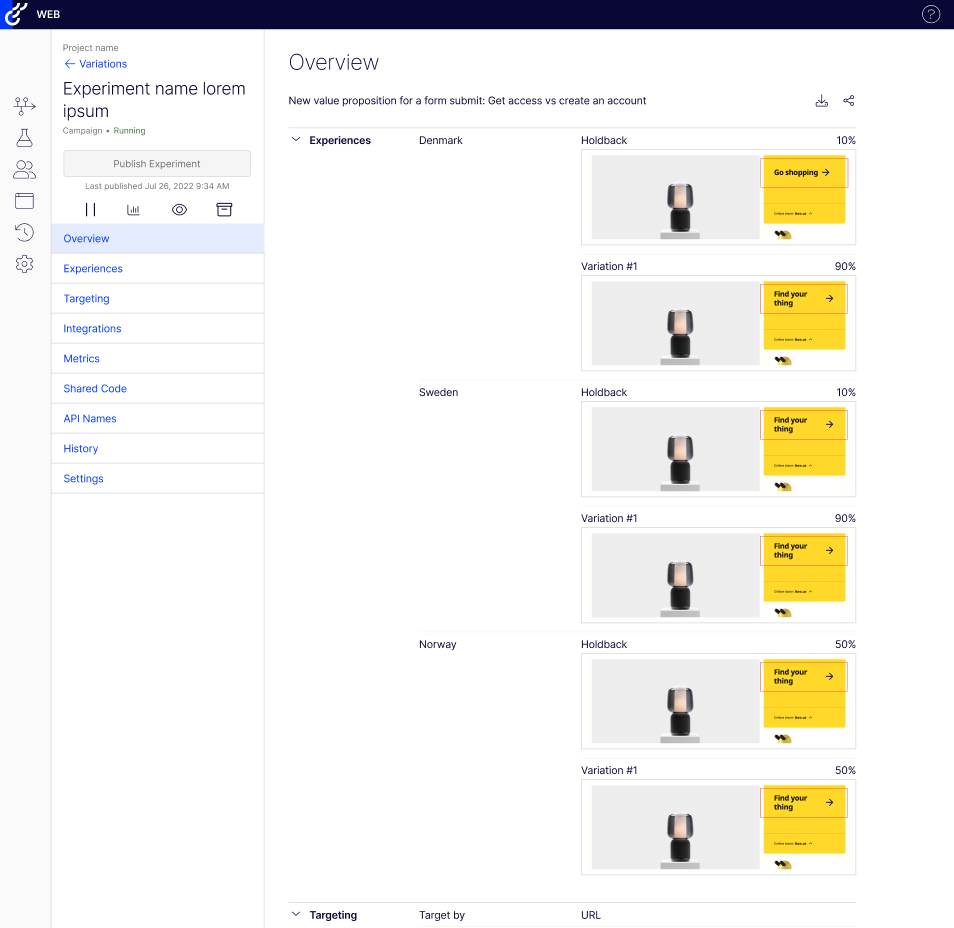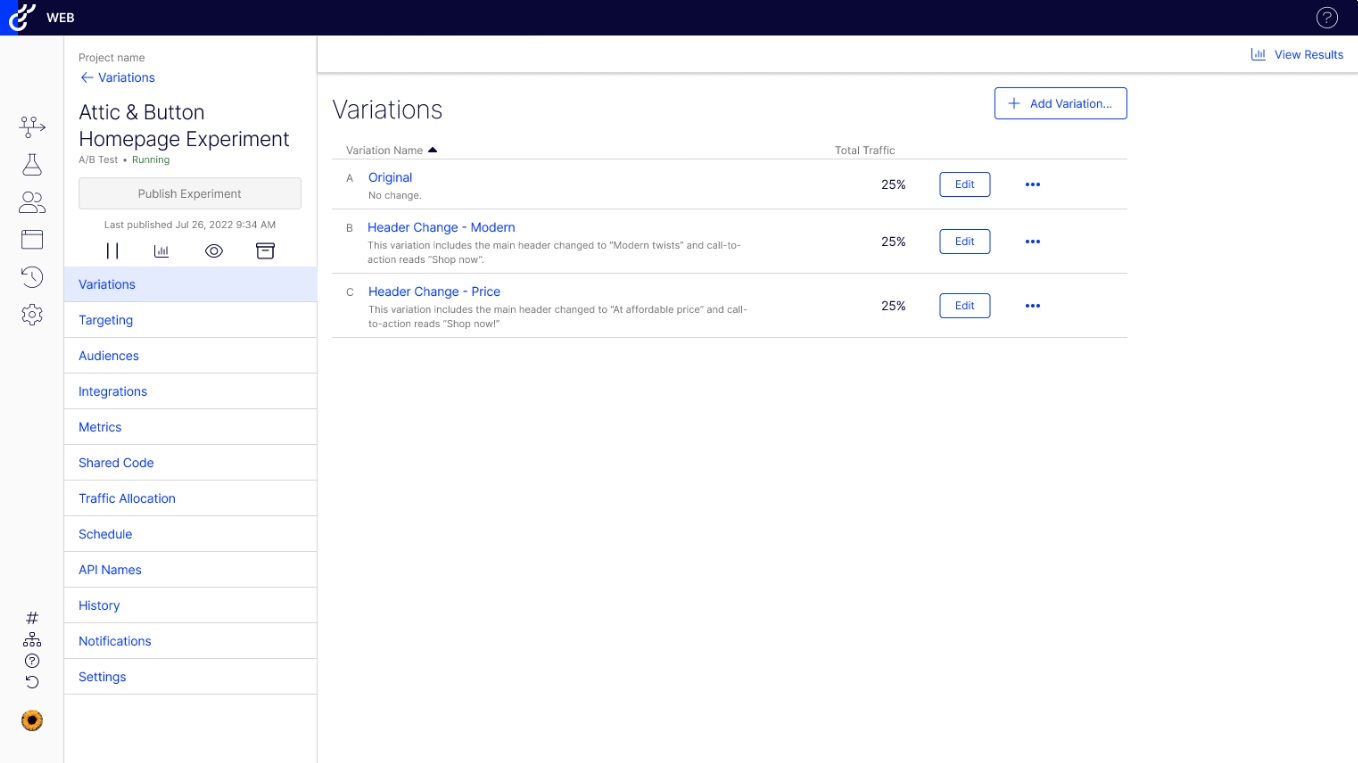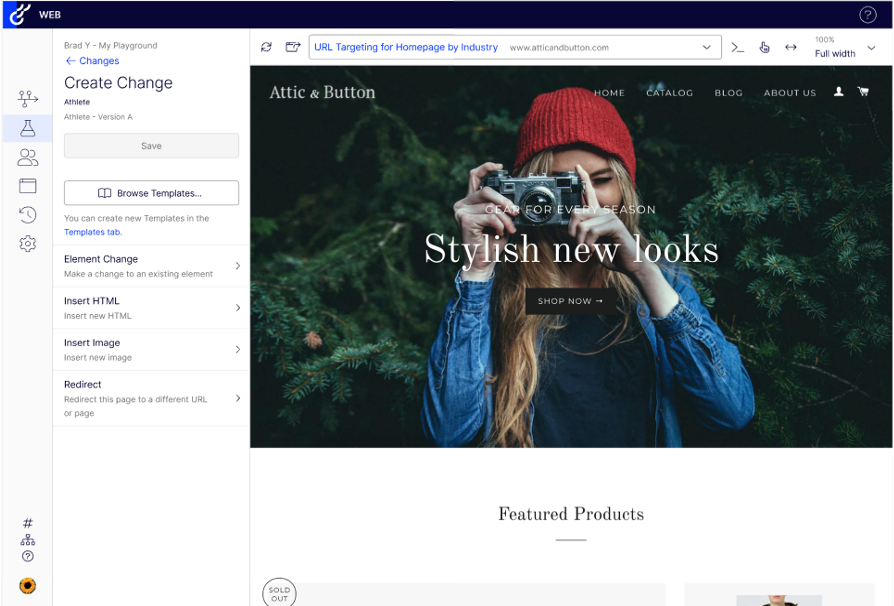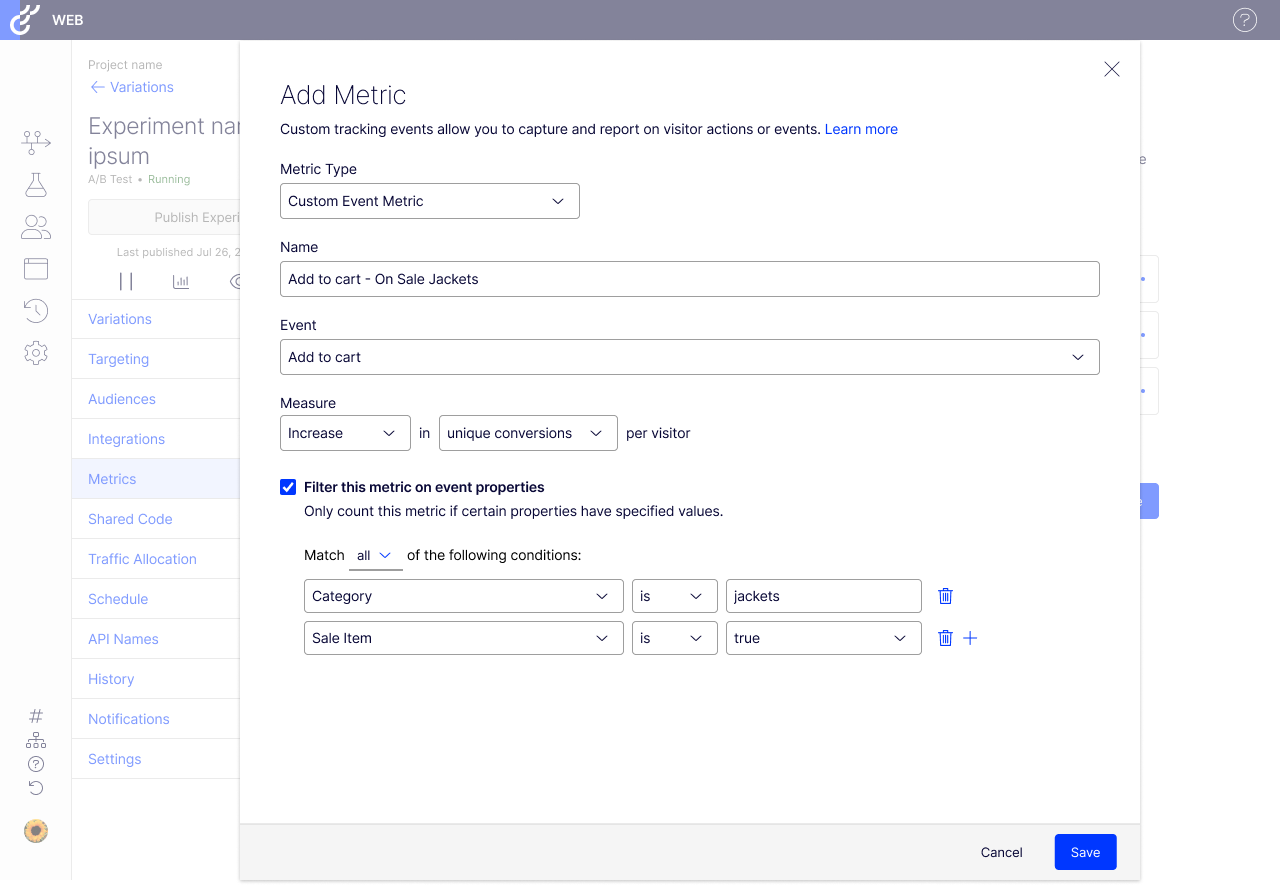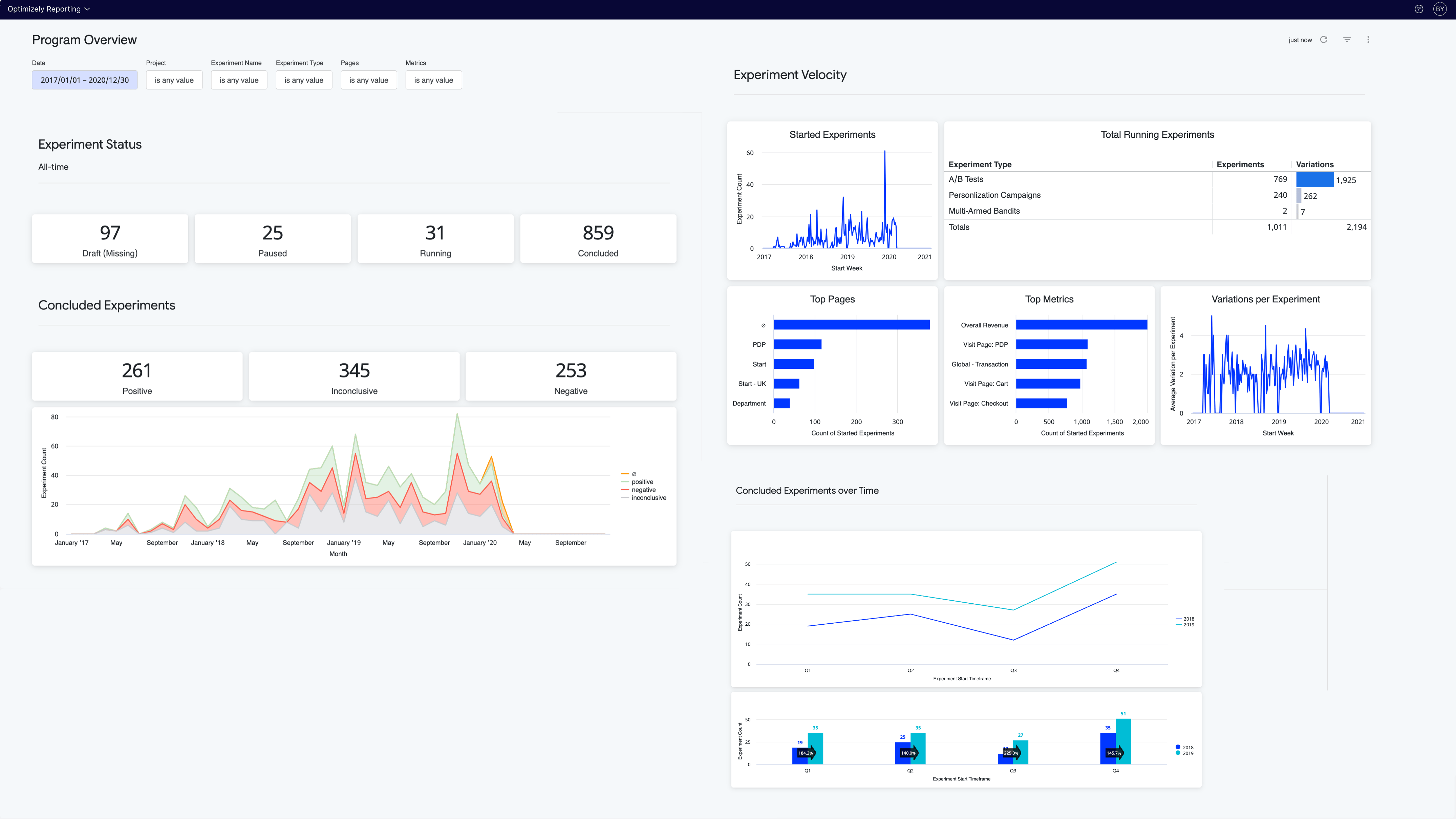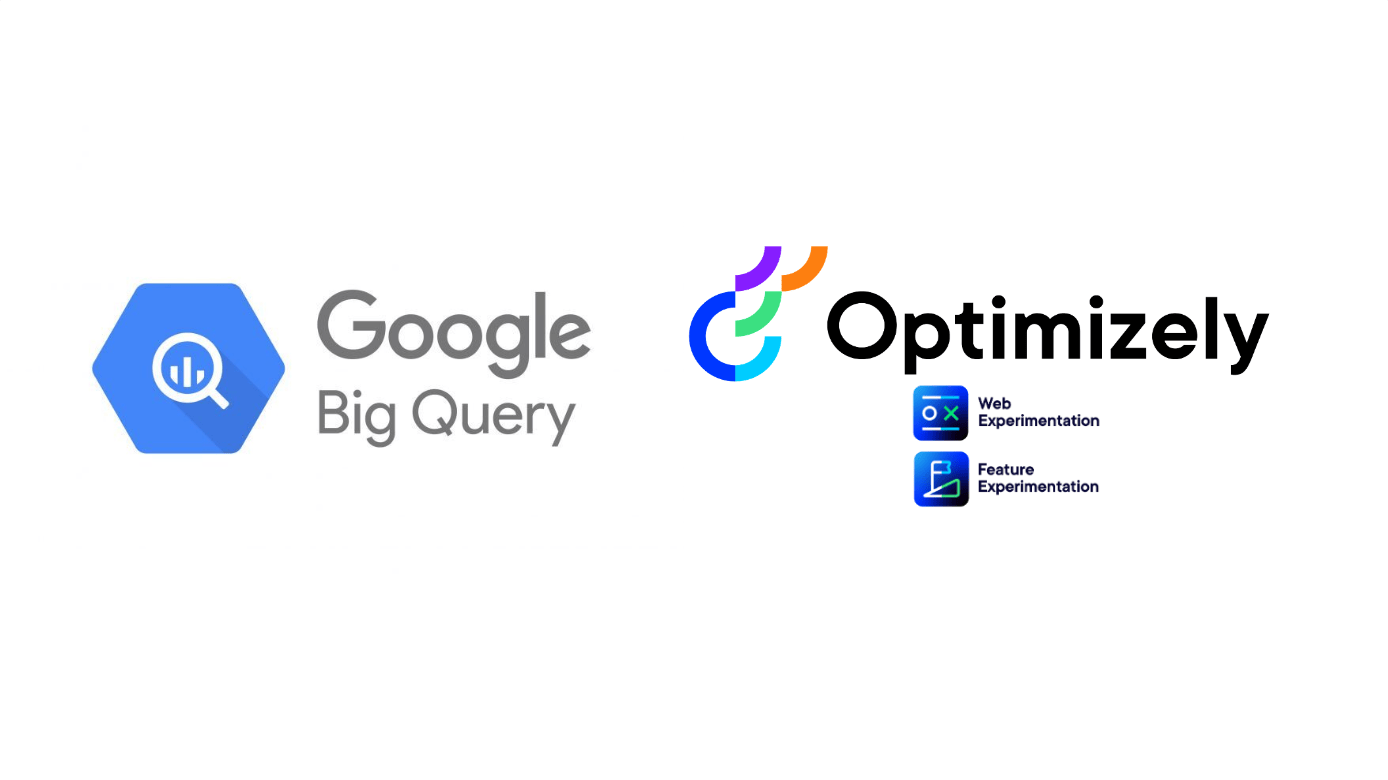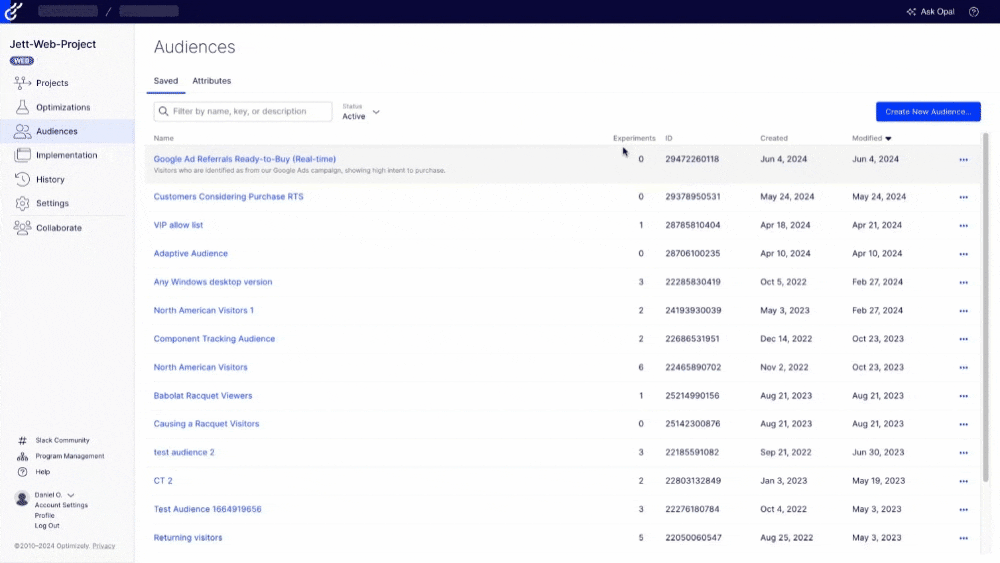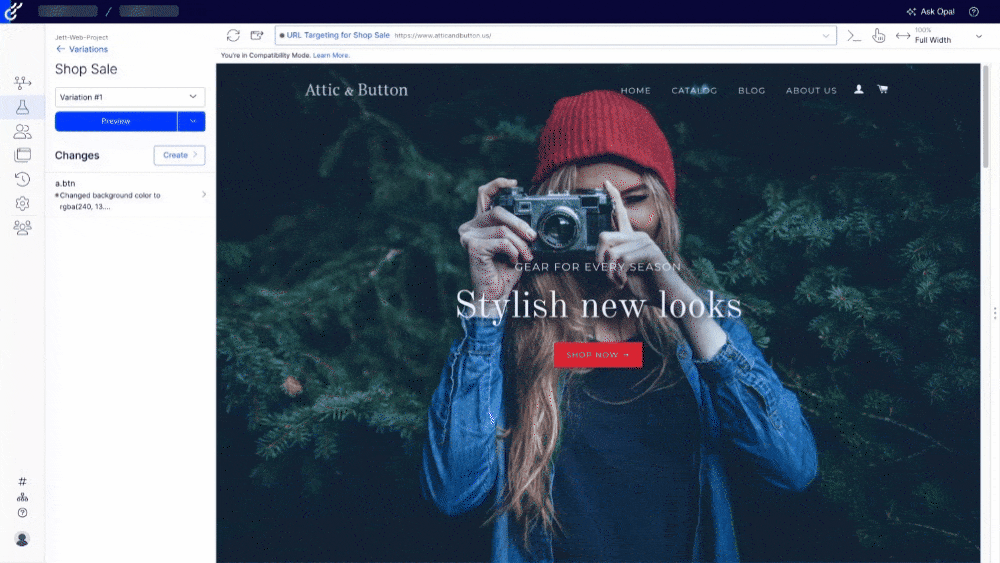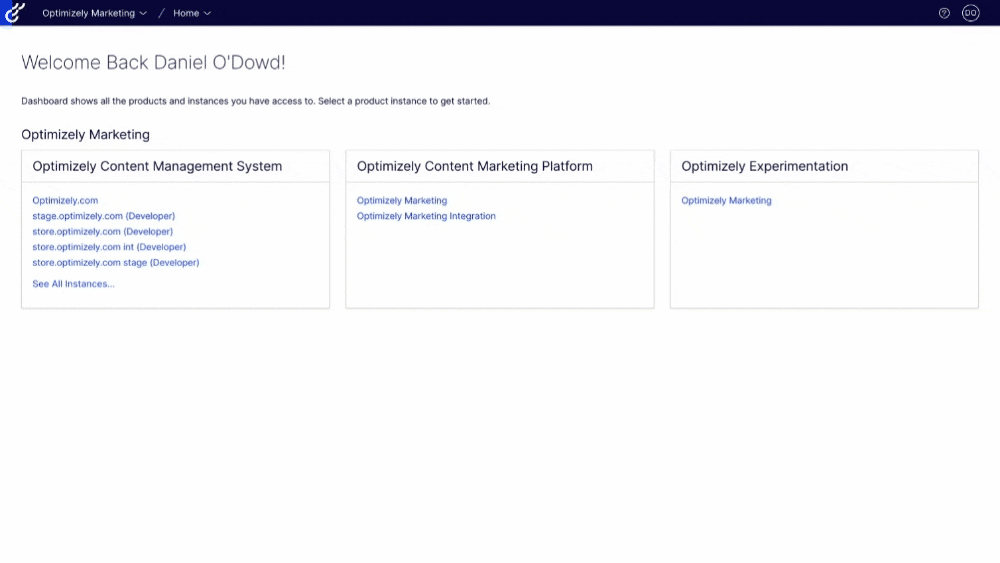ROADMAP & releases
Latest updates for Web Experimentation
Test, target, and personalize with speed and precision. Check out our recent and upcoming enhancement to the world's largest experimentation and personalization platform.
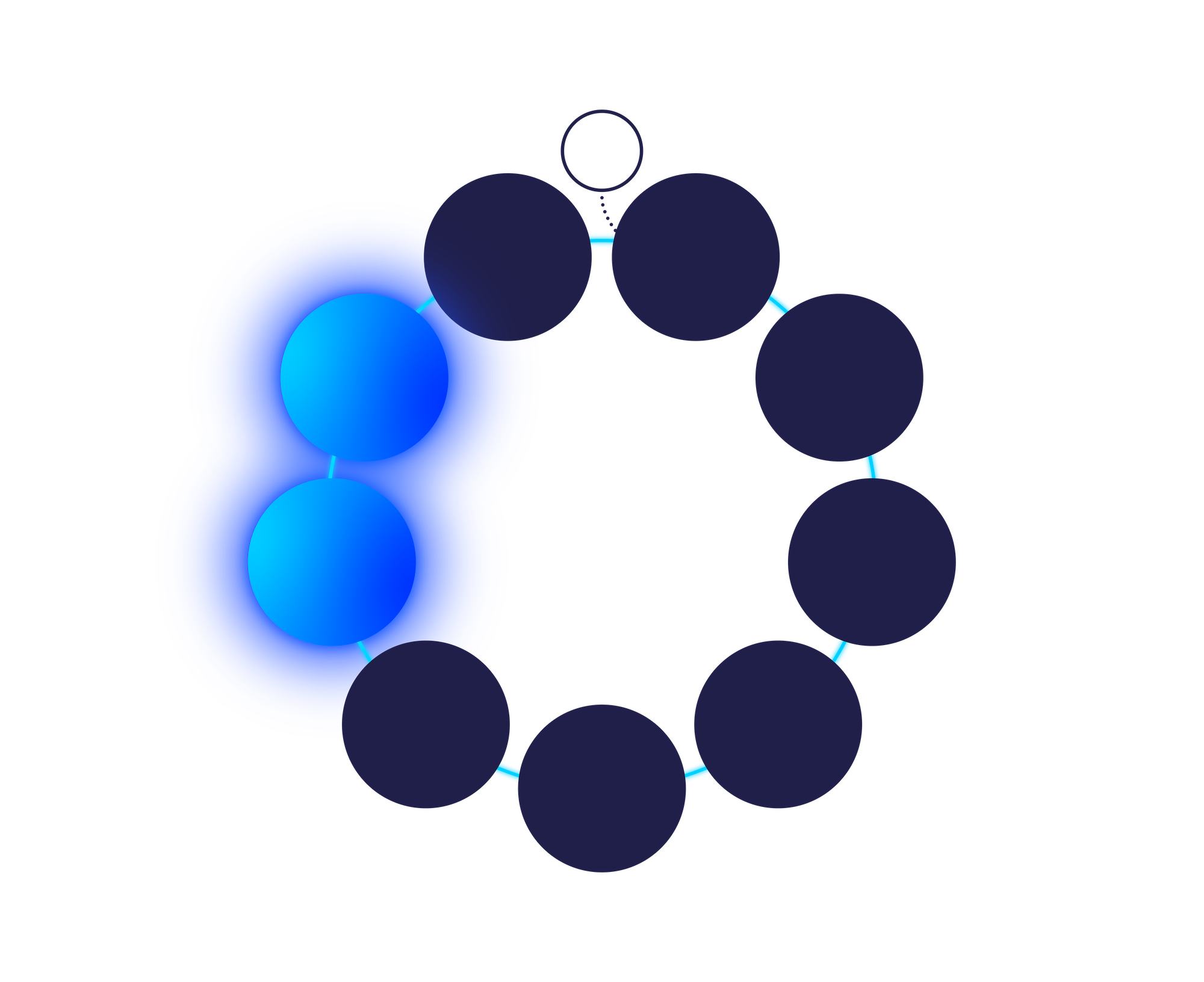
Unlock 1:1 personalization with Contextual Bandits
Learn how to leverage contextual bandits to deliver smarter personalization that drives conversion rates and revenue. Discover Contextual Bandits.
Opal Chat
Beta
Harness Optimizely’s expertise anytime with Opal Chat, your 24/7 experimentation and platform guide.
- Expert Assistance: Access a dedicated Optimizely expert around the clock to get advice on experimentation best practices and platform usage.
- Ideation and Strategy: Chat with Opal to brainstorm what to test and how, optimizing the value you gain from Optimizely.
- Contextual Support: Opal understands your current position in the platform to provide tailored guidance and support throughout your journey.
![]()
Metrics Hub
in development
Simplify and enhance metrics management via reusable metric templates that can be applied across multiple experiments.
- Create once, reuse everywhere: Define a metric once and apply it to different experiments without the need to recreate it each time
- Streamline metrics management: Improve efficiency by managing metrics centrally, reducing manual effort and the risk of discrepancies
- Role-based access: Control who can create, modify, and apply metrics based on user roles and permissions, ensuring secure management
- Consistency across experiments: Ensure accurate comparisons and insights by reusing the same metrics templates across various experiments
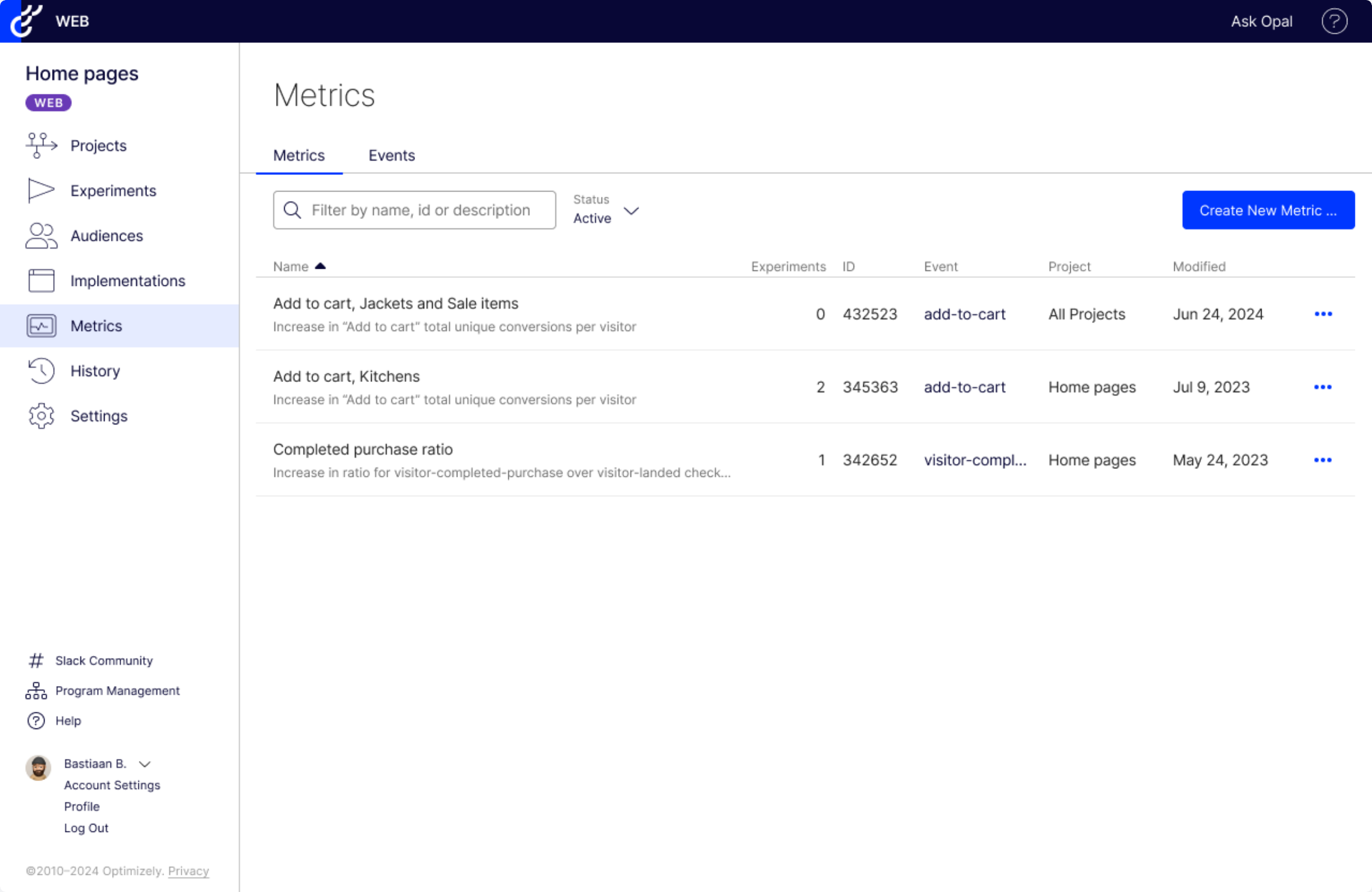
Ratio Metrics
in development
Ratio Metrics empowers you with advanced reporting and flexibility by allowing you to create metrics using two distinct events to form ratio-based metrics.
- Ratio Metrics: Combine two events to generate metrics that provide valuable ratios, enhancing your reporting capabilities.
- Flexibility in Reporting: Leverage this highly requested feature to gain deeper insights and customize your data analysis.
- Enhanced Reporting Options: Enjoy greater flexibility and more sophisticated reporting possibilities with the ability to create ratio metrics tailored to your needs.
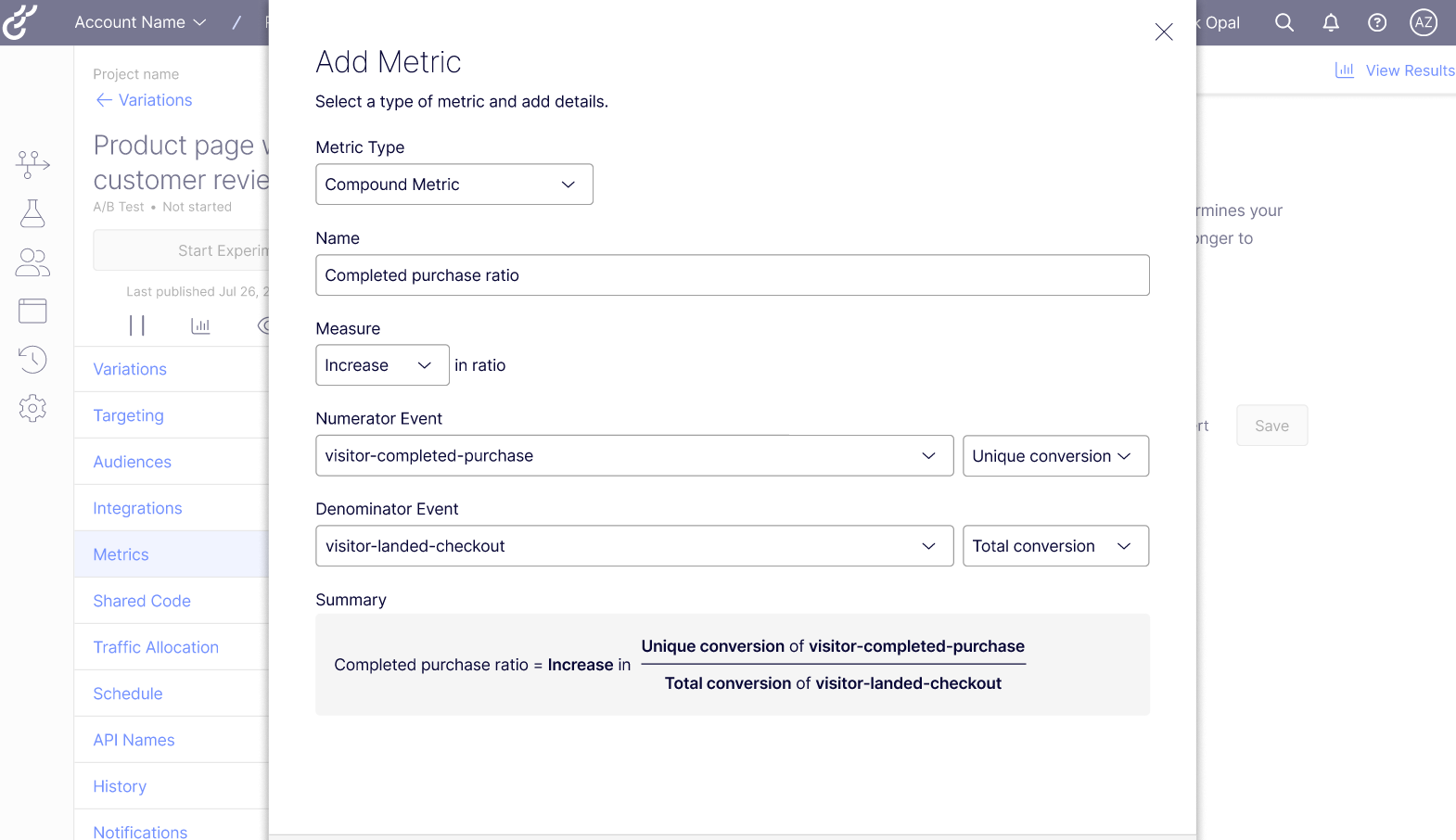
Contextual Bandits
in beta
Unlock true AI-powered 1:1 personalization by harnessing known user data to predict experiences to serve your audiences.
- Flexible implementation: Data, machine-learning, and growth teams can customize bandit algorithms that automatically personalize user experiences to optimize outcomes
- Reduce risk, increase impact: Stop guessing, drive conversions by serving your visitors the optimal and relatable experience for them.
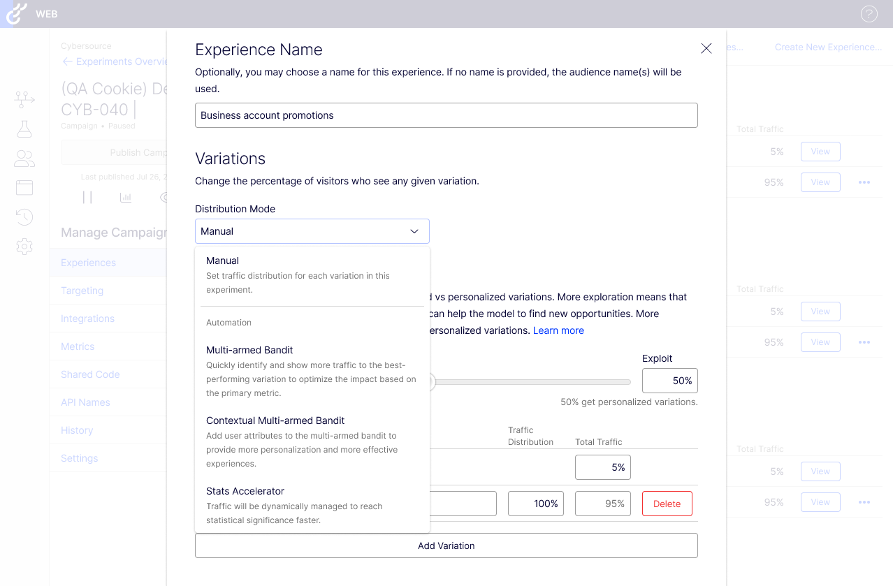
Winner Rollouts
in development
Roll out a winning variation with ease.
-
Simple, fast implementation: Easily roll out winning variations to all users at the push of a button
-
Save engineering time: Reduce the need for additional development resources
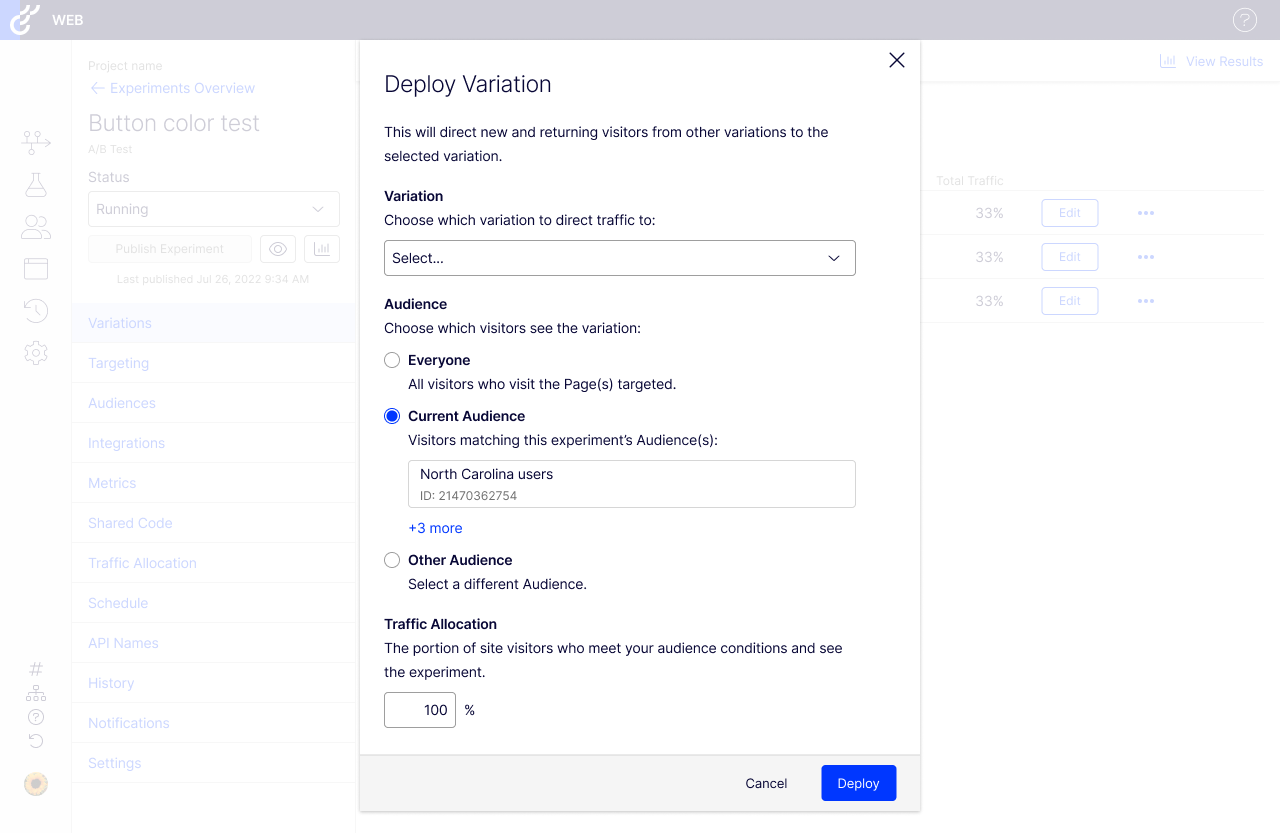
Impact and Results Reports
in development
Empower teams to quantify the value of their experimentation efforts and make data-driven decisions.
- Quantify experiment impact: Measure the cumulative lift or conversions for a given metric based on the results of completed experiments.
- Project financial outcomes: Estimate potential revenue increases from positive experiments or calculate loss avoidance from negative outcomes.
- Comprehensive reporting: Use detailed reports to understand the full impact of your experimentation strategy, helping teams optimize future efforts.
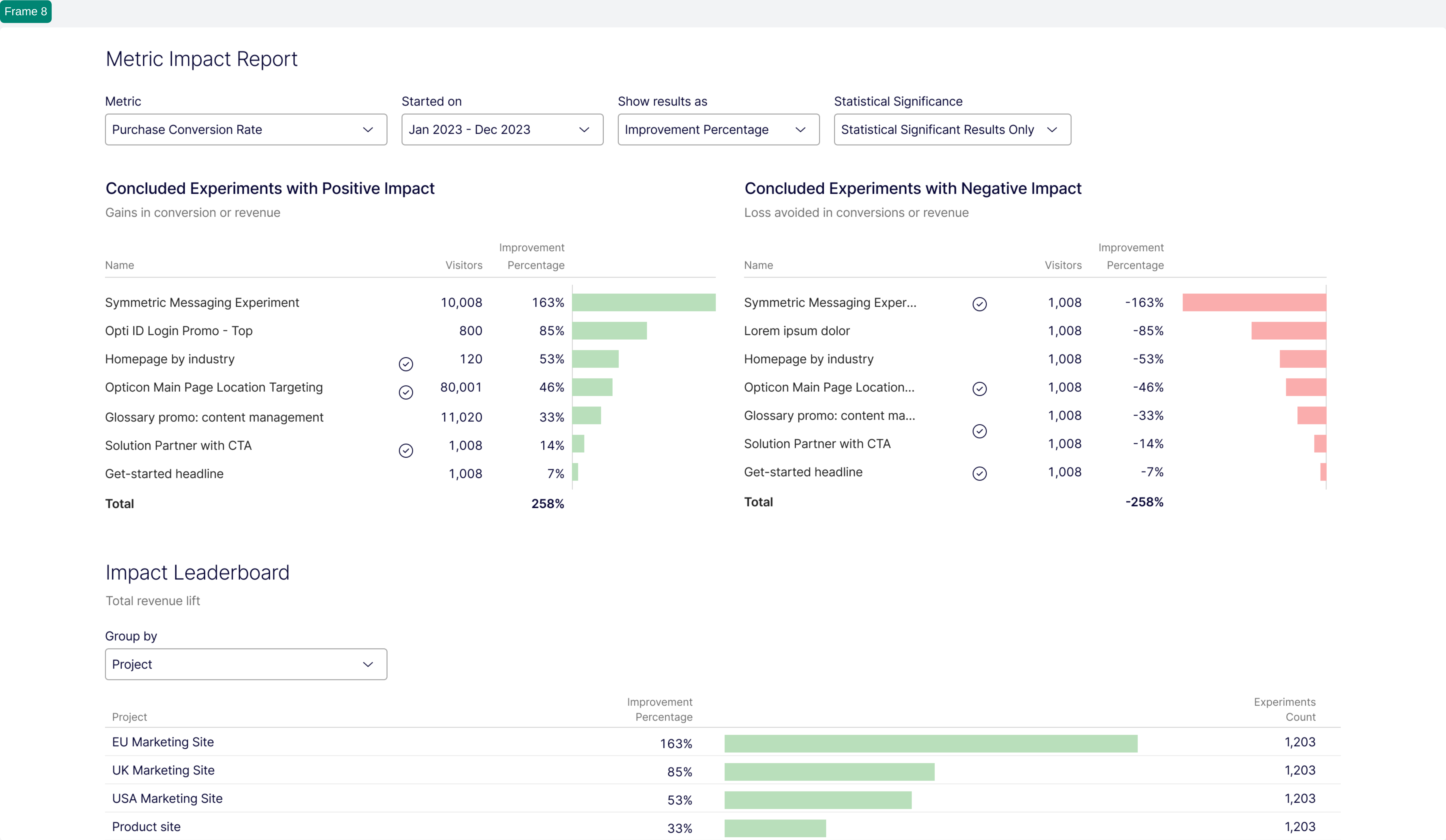
Sample Size Calculator for A/B Tests
in development
Calculate test run-time and traffic needs to launch more effective experiments.
- Enter your expected baseline traffic, conversion, minimal detectable effect (MDE), and statsig threshold, and the calculator will determine how much traffic you need and how long to run the test in order to reach statistical significance
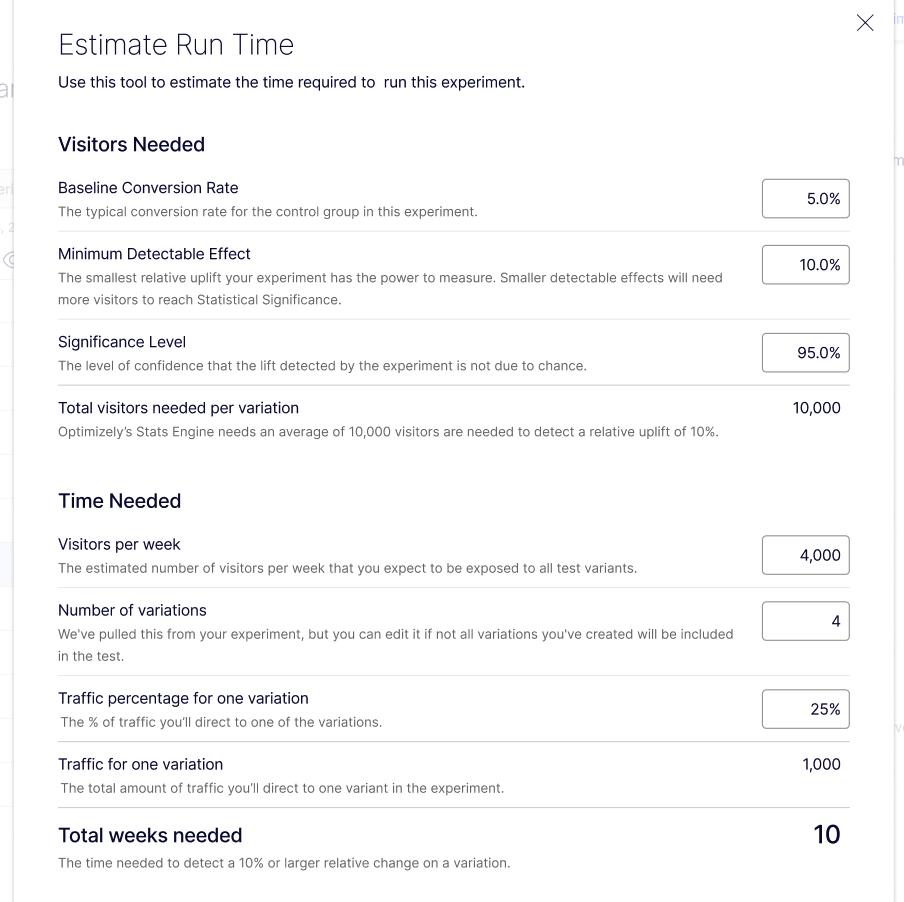
Visual Editor Rebuild
in development
A new visual editor with modern enhancements will provide greater ease-of-use and reliability.
- Overlay the visual editor onto your website
- Reliably load the visual editor
- Enable eveyone to make variation changes
Akamai Support for Edge Delivery
in development
Customers using Akamai as their CDN will be able to leverage Edge Delivery for fast, flicker-free experiences.
- CDN processing: Assign users to experiments and apply changes at the edge before your webb page even reaches your visitors
- Boost page load: Less JavaScript delivered to yoru visitors means faster website performance
- Backwards compatibility: Implement Edge Delivery into existing Web projects without having to rebuild them
That's all for now! Read our Release Notes for more information on all releases.
Learn more about Optimizely's roadmap
Join us on World, the global Optimizely community site hosting forums, blogs and documentation for the Optimizely platform. Engage with the worldwide Optimizely community and learn about product updates to stay up to date on how to unlock your potential.
Disclosure and Safe Harbor. [2022-8]. This product roadmap is intended to outline our general product direction. It is intended for information purposes only. It may not be incorporated into any contract. It is not a commitment to deliver any material, code, or functionality, and should not be relied upon in making purchasing decisions. Customers who purchase our products should make their purchase decisions based upon features and functions that are currently available. Any unreleased services, features, functionality, or enhancements referenced in any document, roadmap, blog, website, press release, or public statement that are not currently available are subject to change at our discretion and may not be delivered as planned or at all. The development, release, and timing of any features or functionality remains at the sole discretion of Episerver Inc. (dba Optimizely).
